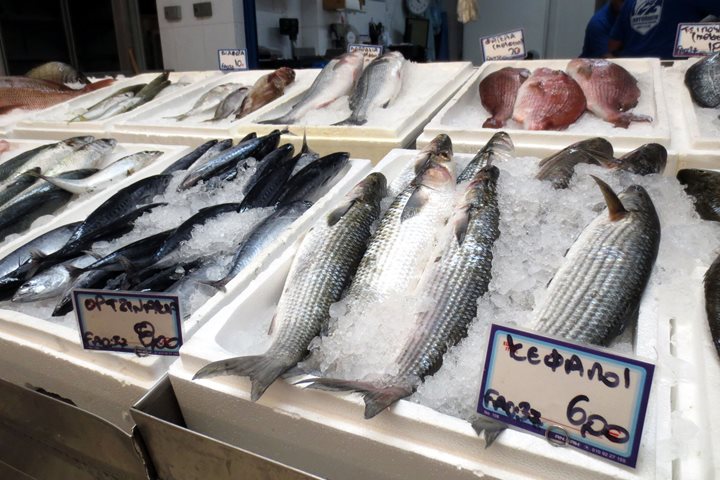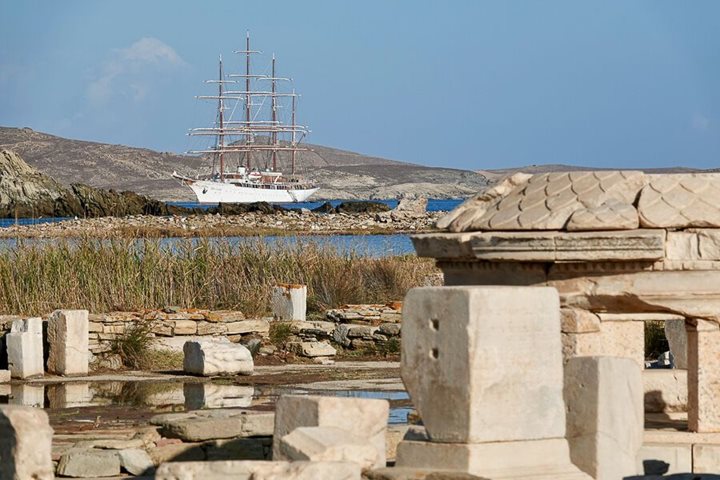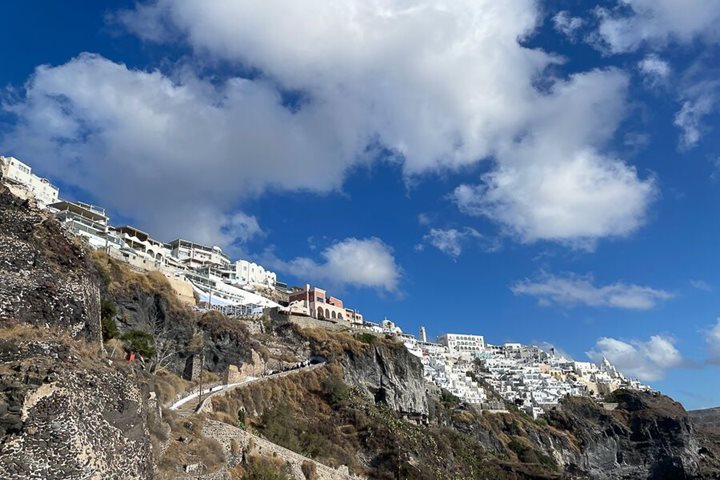We boarded Zodiacs at 8:30 a.m. and landed at the main village of Chora Limani on the island of Tinos. Our first stop was to the classic Cycladic village of Pyrgos (the “Tower”). We rode through rugged mountain valleys covered with ancient terracing to reach the village – the most beautiful of the 61 on the island, in my opinion. Like most islands in the Cyclades, Tinos is rocky and lacks any depth of soil. Terracing allows for the concentration of soil and conservation of water. Since antiquity, Pyrgos has also been the center of marble quarrying, an industry that has propped up many talented artisans and sculptors.
As we drove, we passed windmills and Tinos’s famous dovecotes. We stopped at one location and were able to photograph six elaborately decorated dovecotes dotted down the hillside. Over a thousand dovecotes on the island supply meat from the birds, guano for the fields, and a system for communication.
Our walk through the narrow lanes of the village was memorable—in the middle of the square, surrounded by whitewashed cafes with blue doors and windows, stood the most dramatic plane tree (sycamore), planted in 1859 but whose girth today must be 20 feet. Many of us sat in the square, sipping Greek coffee and sampling the famous local spoon sweet.
Our next stop was the famous pilgrimage church, Our Lady of Tinos. In the 1820s, a young nun had a dream that a famous old icon was buried where the church now stands. They dug and found it. This miracle made Our Lady of Tinos the most famous pilgrimage church in Greece. Hundreds of beeswax candles burned brightly in the crowded sanctuary as incense filled the air.
At 2:47 p.m. we dropped anchor off the island of Delos, which was inhabited for at least 4,000 years, long before the Greek-speaking people arrived. John announced that we would have a refreshing swim from Sea Cloud from 3:30 p.m. to 4:00 p.m. Many of us were bobbing in the beautiful Aegean before we began our visit to Delos.
The Ionians came here in about the year 1000 B.C., establishing the annual Delia festival here and bringing the legend of Apollo: Leto, pregnant from her affair with Zeus, sought sanctuary from the jealous Zeus (who had the unfortunate habit of consuming his children so that he would never have any rivals) to give birth to her son and daughter, Apollo and Artemis. Leto gave birth to the twins at the edge of the sacred lake. Artemis was born first and became the chaste goddess of the hunt, followed by her twin Apollo, the god of the sun and rationality. Delos soon became a place of pilgrimage for the island Greeks and this in turn led to its status as a bustling commercial center with a population of some 30,000, reaching its maximum in the first century B.C. Delos was the center of the first Delian League, the first Athenian naval confederation in 478, making Athens the leading city-state among the Greeks and establishing Athens as a proto-imperial city.
The commercial success of Delos attracted cosmopolitan clientele. One can find temples to foreign gods here, like the Temple of Isis, an important Egyptian goddess. Twenty years ago, I was stunned to find a carving of the Carthaginian Punic goddess Tanit, the consort of Baal Hammon and Melqart, in the floor of the “House of the Masks.” The museum on Delos, which we all visited, also has some fine Hellenistic-era busts.









